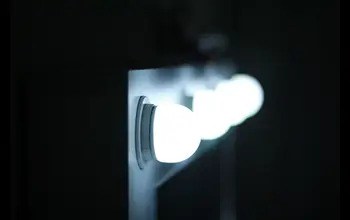
In today’s rapidly evolving world, LED lighting has emerged as a revolutionary technology, transforming the way we illuminate our surroundings. With its energy efficiency, extended lifespan, and versatile applications, LED lighting has become a beacon of sustainable illumination.
Advantages of LED Lighting
LED, short for Light Emitting Diode, is a semiconductor device that converts electrical energy into light. One of the most significant advantages of LED lighting is its remarkable energy efficiency. Unlike traditional incandescent bulbs, which emit light by heating a filament, LEDs emit light through a process called electroluminescence. This means that LED lights consume significantly less energy to produce the same amount of brightness, resulting in reduced energy bills and a smaller carbon footprint.
Energy Efficiency of LED Lights
LED lights are renowned for their energy efficiency, consuming up to 80% less energy than traditional incandescent bulbs. This efficiency not only saves money but also contributes to a greener environment by reducing greenhouse gas emissions. As a result, LED lighting has become a cornerstone in global efforts to combat climate change.
Longevity and Durability of LED Lights
Another remarkable feature of LED lighting is its extended lifespan. LED bulbs can last up to 25,000 hours or more, compared to the relatively short lifespan of incandescent bulbs. This longevity translates to fewer replacements, less waste, and more cost savings over time.
Versatility in Design and Application
LED technology offers unparalleled versatility in design and application. LEDs can be found in a wide range of lighting products, from ambient residential lighting to high-intensity commercial floodlights. Their compact size and ability to emit light in various colors make them ideal for creative and artistic lighting installations.
Impact of LED Lighting on the Environment
LED lighting plays a vital role in reducing the environmental impact of lighting. The lower energy consumption and longer lifespan of LED bulbs result in fewer resources used and less waste generated. Additionally, LED lights do not contain hazardous materials like mercury, commonly found in fluorescent lights, making their disposal safer for the environment.
Comparative Analysis with Traditional Lighting
When compared to traditional lighting options like incandescent and fluorescent bulbs, LED lighting excels in almost every aspect. LEDs generate less heat, making them safer to touch and reducing the risk of fire. Moreover, LED lights instantly reach full brightness without the warm-up time required by traditional bulbs.
LED Lighting in Commercial Spaces
The efficiency and cost-effectiveness of LED lighting have made it a preferred choice for commercial spaces. Offices, retail stores, and warehouses have adopted LED lighting to enhance visibility, create ambiance, and save on energy costs.
Residential Applications of LED Lighting
In residential settings, LED lighting provides a wide range of options to suit every room’s ambiance and functionality. From warm and cozy lighting in living rooms to bright and focused lighting in kitchens, LED technology offers homeowners flexibility in creating the desired atmosphere.
Innovations in LED Technology
As technology advances, LED lighting continues to evolve. Smart LEDs, for instance, can be controlled remotely through smartphones or voice commands. This level of control not only enhances convenience but also contributes to energy savings by allowing users to adjust brightness and schedules.
Choosing the Right LED Light
Selecting the right LED light involves considering factors such as color temperature, lumens, and the specific lighting needs of the space. With a plethora of options available, it’s essential to choose LED lights that complement the room’s purpose and design.
Maintenance and Care of LED Lights
LED lights require minimal maintenance compared to other lighting options. Regular dusting and cleaning of fixtures, along with avoiding excessive heat buildup, can help prolong their lifespan and maintain optimal performance.
Addressing Common Misconceptions
Despite their numerous benefits, LED lights have sometimes been subject to misconceptions. One common myth is that LEDs emit only harsh, cold light. However, advancements in technology have allowed for the production of warm and natural light tones.
Future Trends in LED Lighting
The future of LED lighting looks promising, with ongoing research focusing on improving efficiency, color accuracy, and adaptability. As sustainable practices gain traction, LED technology is expected to play a pivotal role in shaping the way we illuminate our world.
Ready to transform your space with radiant lighting? Elevate your environment today with Professional Electric‘s LED Lighting solutions. Illuminate, captivate, and create a more energy-efficient world around you.